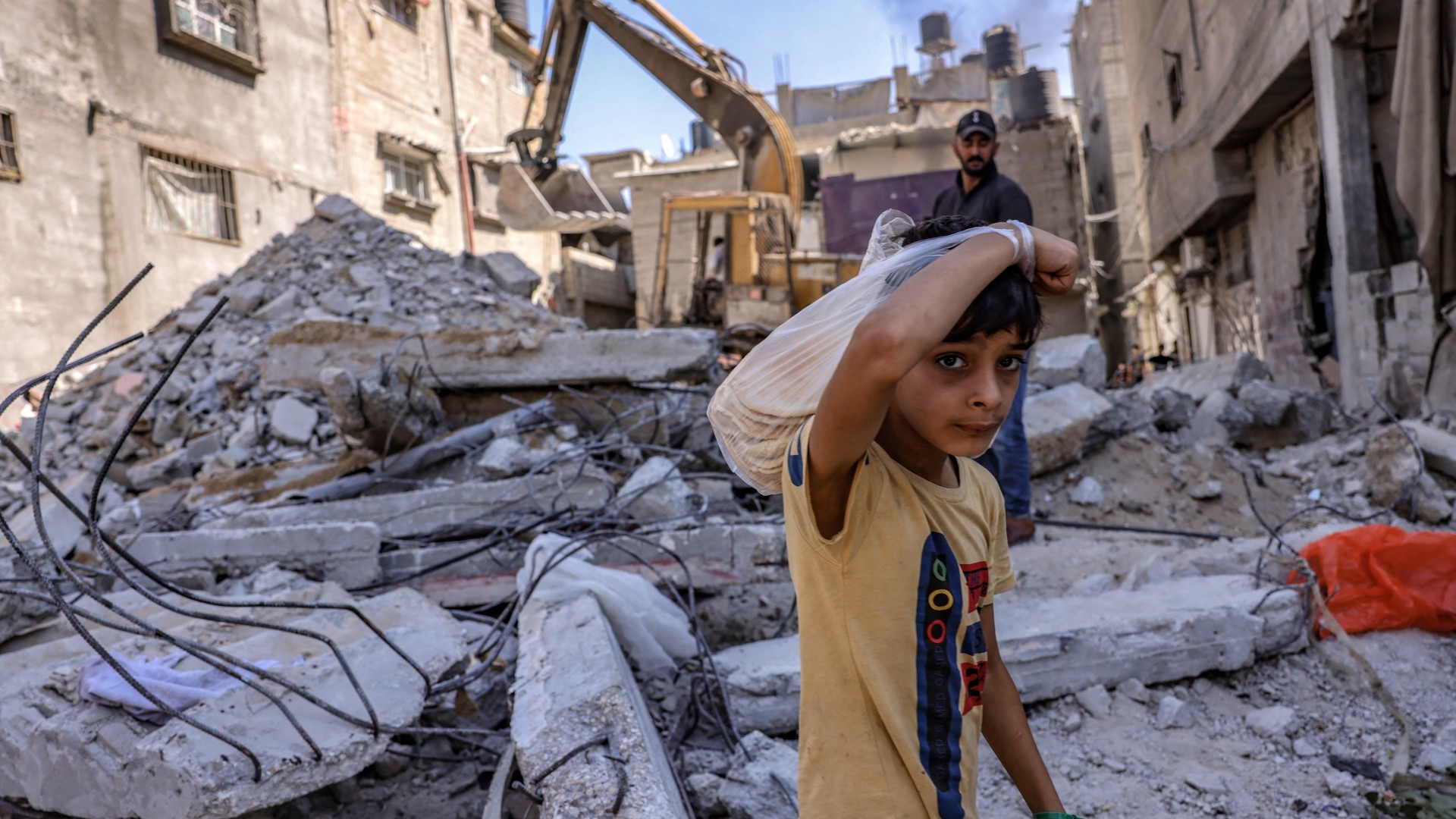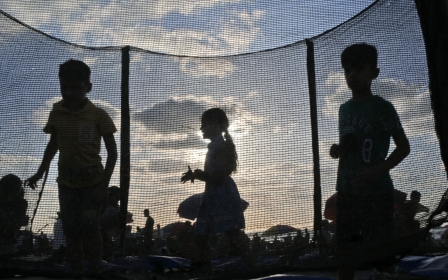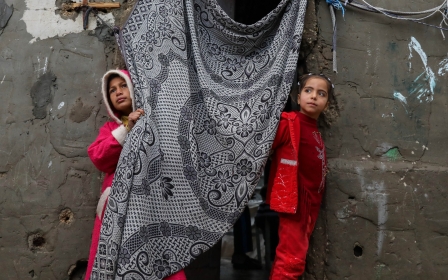Gaza: 15 years of a devastating blockade that benefits no one

The blockade of the Gaza Strip, which has devastated the Palestinian coastal enclave's social and economic life, is now in its 15th year.
The Israeli land, air and sea blockade, which began after Hamas won the 2006 Palestinian legislative elections, has left two million Palestinians living in an open-air prison. They are prevented from leaving unless they are granted permission.
Israel's public rationale for imposing the siege has been focused on the security of its citizens and holding Hamas, which it considers to be a terrorist group, accountable for rocket attacks on them.
Over the 15 years the siege has been maintained, a number of prominent Israeli officials have questioned the wisdom of the blockade, believing that the ever-worsening conditions in the small, self-governing Palestinian territory on the Mediterranean coast, have in fact increased support for Hamas and other armed groups.
The ongoing blockade, which includes severe restrictions not only on the movement of people but of goods, amounts to unlawful collective punishment under international law.
Israel prevents Palestinian authorities from operating an airport or seaport in Gaza, and sharply restricts the entry and exit of goods, often on security grounds.
There are three border crossing points out of Gaza - two controlled by Israel and one by Egypt, which have tacitly supported the siege for most of its existence. The movement of people out of the coastal enclave takes place at Israel’s Beit Hanoun crossing and at the Rafah crossing with Egypt.
While both Israel and Egypt have tended to keep their borders closed - citing security reasons - in May 2018, following the first wave of the Great March of Return demonstrations, there was a shift in policy from the Egyptian government of President Abdel Fattah el-Sisi, who had previously kept the Rafah crossing sealed for long stretches of time.
Israel allows passage through the Beit Hanoun crossing in "exceptional humanitarian cases, with an emphasis on urgent medical cases", though this treatment is often denied and children have been forced to travel through the crossing to get treatment alone.
In other instances, patients from Gaza have faced the loss of their homes while in hospital in Jerusalem, and severe import and export restrictions mean urgent medicines are often not available.
'Hamas is the fig leaf for the blockade'
While the official blockade is 15 years old, Palestinian scholar Tareq Baconi, author of Hamas Contained, told Middle East Eye that its origins were in the First Intifada (1987-1993). Indeed, historians like Jean-Pierre Filiu speak of the pacification of Gaza as beginning in 1948, with the creation of the state of Israel.
In the 1990s, Israeli authorities introduced a series of restrictive policies in Gaza, including in agriculture, fishing and the movement of workers. These policies came long before the election of Hamas, which Baconi describes as an "armed resistance movement fighting a colonial regime".
"Hamas is the fig leaf that allows Israel to maintain the blockade," Baconi said. "It was the policy of successive Israeli governments to maintain a blockade for demographic reasons, because there are two million Palestinians there."
In 2005, when Israel pulled out of Gaza, bringing 8,000 Israeli settlers with it, Shimon Peres, then Ariel Sharon’s deputy prime minister, said: "We are disengaging from Gaza because of demography."
'There is a collective sense that there is no future, that there is no horizon'
- Omar Shakir, HRW
The aim was to maintain a Jewish majority in the West Bank, something that couldn’t be done with Gaza as part of the fold.
The impact the 15-year blockade has had on Gaza’s residents is severe. A 2021 World Bank report found that the poverty rate in the Palestinian territory had reached 59 percent. Over 80 percent of the besieged coastal strip's population is dependent on foreign aid. The unemployment rate is around 47 percent and four out of five children in Gaza suffer from "depression, sadness and fear".
"It's hard to fathom," said Omar Shakir, Israel and Palestine director at Human Rights Watch (HRW), when asked about the length and impact of the blockade.
"One way to think about it would be in relation to Covid-19 lockdowns and how significantly they have changed the way people live and work," he told Middle East Eye.
"Gaza has been under lockdown for 15 years. When you start to imagine that, you can see how deep the effect has been."
'Sweeping restrictions'
Marking the 15-year anniversary of the blockade, the US-based HRW released a report which emphasised that "sweeping restrictions on leaving Gaza" had devastated its economy, deprived "more than two million residents of opportunities to better their lives" and "contributed to fragmentation of the Palestinian people".
The blockade, HRW said, "forms part of Israeli authorities' crimes against humanity of apartheid and persecution against millions of Palestinians".
The effect this has had on the mental health and well-being of Gaza's residents is hard to understate. Depression and symptoms of post-traumatic stress are widespread, particularly among children, 90 percent of whom have experienced personal trauma.
"There is a collective sense that there is no future, that there is no horizon," Shakir told MEE. "You live day to day surviving, but you can't imagine anything more for yourself."
A small, self-governing Palestinian territory on the Mediterranean coast, Gaza was a part of historic Palestine but was cut off from the rest of it following Israel's creation.
The enclave was captured by Egypt in the 1948 Arab-Israeli war and remained under its control until 1967, after which it came under Israeli occupation - along with the West Bank and East Jerusalem - following the 1967 Middle East War.
The Oslo accords of 1993 defined the Gaza Strip and West Bank as two territories of a single unit, between which Palestinians should be allowed to move freely and trade goods without restrictions. But this has never been the case on the ground, with Israel using "security" as a pretext for restricting the movement of Gazans long before the 2007 blockade.
In 1995, Israel built an electronic fence and concrete wall around the Gaza Strip, and in 2000, when the Second Intifada erupted into life, Israeli authorities cancelled a slew of existing travel and work permits in Gaza. In 2001, just three years after it opened, Israel bombed and demolished the Gaza airport.
In January 2006, with Palestinians increasingly disillusioned by their own leadership and convinced the peace process was a mirage, Hamas won Palestinian legislative elections, defeating the ruling Fatah party, which refused to recognise the result.
Both Israel and the US then fought Hamas politically and militarily. Confidential documents revealed by Vanity Fair in 2008 showed that the US government "backed an armed force under Fatah strongman Muhammad Dahlan, touching off a bloody civil war in Gaza and leaving Hamas stronger than ever".
'No option but to leave'
The blockade, maintained ever since Hamas established its control in Gaza, has pushed more than a million people below the poverty line and cost the enclave $16bn, a UN report in 2020 found.
Over the years, Israel's military and security communities have indicated that this situation is not in anyone’s interests.
In 2017, Yoav Mordechai, then coordinator of Israeli government activities in the territories, called for the implementation of a Gaza version of the Marshall Plan, through which the international community would direct large amounts of assistance to improve the economy in the Gaza Strip.
Palestinians in Gaza have increasingly been leaving the enclave via Egypt's Rafah crossing, flying to Turkey from Cairo and then enlisting the services of people smugglers to make the journey into Europe.
"Palestinians in Gaza feel like they have no option but to leave," Shakir said.
But for those leaving Gaza through Egypt, the process is still fraught, and often involves paying hundreds or even thousands of dollars in bribes.
The Palestinians who make it to Turkey are often unable to go on to Europe, and those who make it to Europe are often unable to stay. If they do, they are then far from home, cut off from family and community back home in Gaza. Some die on the way to their final destination. Many have saved money for years, or have taken out loans.
While the international community provides aid, it offers little in the way of resistance to Israel’s blockade. "What’s needed is pressure that will force Israel to end the blockade," Shakir said.
"Sadly, I don’t think anything has changed," said Baconi.
"I think Hamas and Israel have reached a very violent equilibrium, where Hamas uses rockets to push back against the blockade and then we see sporadic escalations of violence and massive loss of life… If the international community continues to see the blockade as a security mechanism, nothing will change."
Middle East Eye propose une couverture et une analyse indépendantes et incomparables du Moyen-Orient, de l’Afrique du Nord et d’autres régions du monde. Pour en savoir plus sur la reprise de ce contenu et les frais qui s’appliquent, veuillez remplir ce formulaire [en anglais]. Pour en savoir plus sur MEE, cliquez ici [en anglais].








